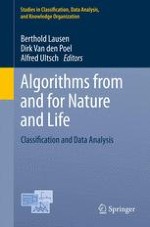2013 | OriginalPaper | Buchkapitel
Implications of Axiomatic Consensus Properties
verfasst von : Florent Domenach, Ali Tayari
Erschienen in: Algorithms from and for Nature and Life
Aktivieren Sie unsere intelligente Suche, um passende Fachinhalte oder Patente zu finden.
Wählen Sie Textabschnitte aus um mit Künstlicher Intelligenz passenden Patente zu finden. powered by
Markieren Sie Textabschnitte, um KI-gestützt weitere passende Inhalte zu finden. powered by
